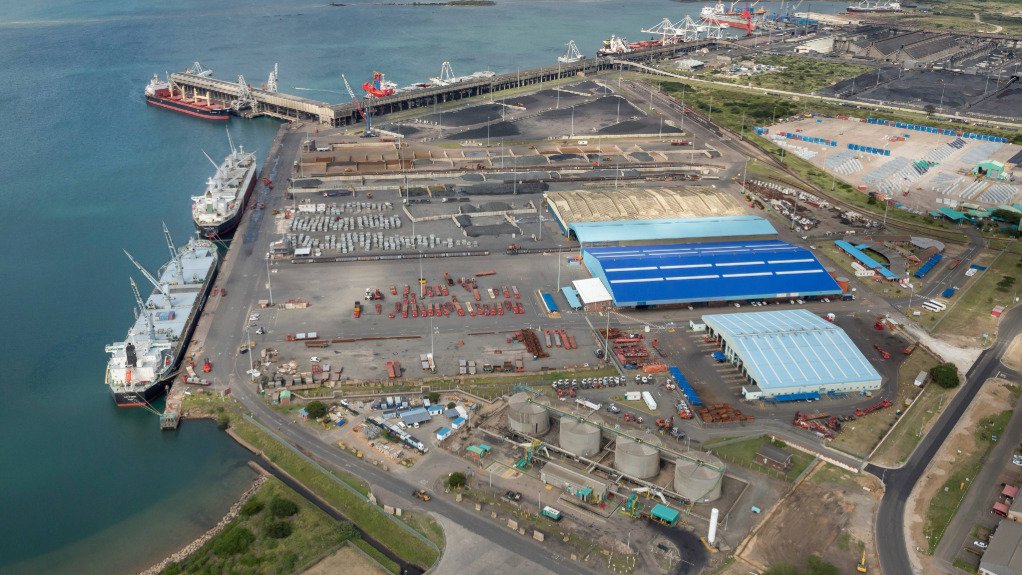The Port of Richards Bay, in KwaZulu-Natal, is progressing with planning for infrastructure and terminal investments aimed at consolidating its position as a bulk export hub for key minerals such as coal and chrome, while also diversifying its activities to include more containers, as well as the importation and storage of liquefied natural gas (LNG) and liquid fuels.
The developments are included in a masterplan and the Transnet National Ports Authority (TNPA) estimates that investments of more than R30-billion will be required over the coming ten years to open up new berths, as well as to facilitate the relocation of the South African Navy from the Port of Durban to the Port of Richards Bay.
Besides the new LNG Berth 207 and associated infrastructure, which is scheduled to be operational in 2027, new berths are planned in the coming five years at Berths 605, 709 and 710, as well as 802 and 803.
TNPA has appointed Grindrod South Africa as the preferred bidder to develop and operate a container handling facility at the port, in line with a strategy to increase the yearly container handling capacity at the port from 50 000 twenty-foot equivalent units (TEUs) to 200 000 TEUs. The project will involve capital investment of about R285-million.
Meanwhile, FFS Tank Terminal has been appointed to develop and operate a brownfield liquid bulk terminal under a 25-year terminal concession also in line with the masterplan, while a tender evaluation is currently under way for five greenfield liquid bulk terminals in the South Dunes Precinct.
To sustain its position as a bulk export hub, however, the Bayvue Rail Yard is being expanded to accept longer trains in anticipation of rail recapturing some of its former position at the port, where trucks have been playing a significant role in recent years as the rail service collapsed.
During a recent briefing, port manager Dennis Mqadi stressed that the port, which has been operational since 1976, has not been designed to receive road trucks.
However, monthly volumes had a one point peaked at 35 000 trucks, stretching both its infrastructure and that of the surrounding town to breaking point and resulting in serious safety and security problems.
Various initiatives have been launched together with the surrounding municipality to manage the high truck volumes, which have settled at between 500 to 700 a day. Interventions are also being made through the Presidency’s National Logistics Crisis Committee to ensure a recovery in freight rail.
“It must be emphasised that we are not shifting away from bulk exports at Richards Bay, we are just adding and complementing those bulk export with new growth activities,” Mqadi explains.
He also reports that steps are being taken to improve the deepwater port’s climate resilience, as well as to green its operations.
The port’s breakwater will be enhanced to protect and sustain the current infrastructure, which has come under threat from recent extreme weather events.
The breakwater’s dolos will be refurbished and/or replaced to position them to cope with 11-m-heigh waves and enable the port to receive the latest generation of vessels. The project is anticipated to start in the first quarter of 2025/26.
To green the port, TNPA is seeking a partner to develop a 20 MW solar PV plant, construction of which Mqadi says will begin soon and will assist the port in lowering its carbon emissions.
Edited by: Creamer Media Reporter
EMAIL THIS ARTICLE SAVE THIS ARTICLE
ARTICLE ENQUIRY
To subscribe email subscriptions@creamermedia.co.za or click here
To advertise email advertising@creamermedia.co.za or click here













